You'll love it if:
- You enjoy fast-paced arena battlers like Final Fantasy Dissidia or the Gundam Franchise
- You are an avid Jujutsu Kaisen fan and want to recreate some of the iconic battles
Not for you if:
- You need in-depth mechanics and combos with long blockstrings
- You are looking for a classic fighting game experience like Street Fighter or Tekken
Following on the heels of Tekken 8, Bandai Namco has released yet another fighting game in Jujutsu Kaisen Cursed Clash. As an avid fan of manga and anime, how could I not pick up this game? The game takes the most iconic characters from season one of the anime and Jujutsu Kaisen 0, giving us a modest 16-character roster. The combat is a dynamic 2v2 centric experience and really enables anyone to recreate their favourite moments from the series, while also giving us a unique fighting experience. Here is my review of Jujutsu Kaisen Cursed Clash.
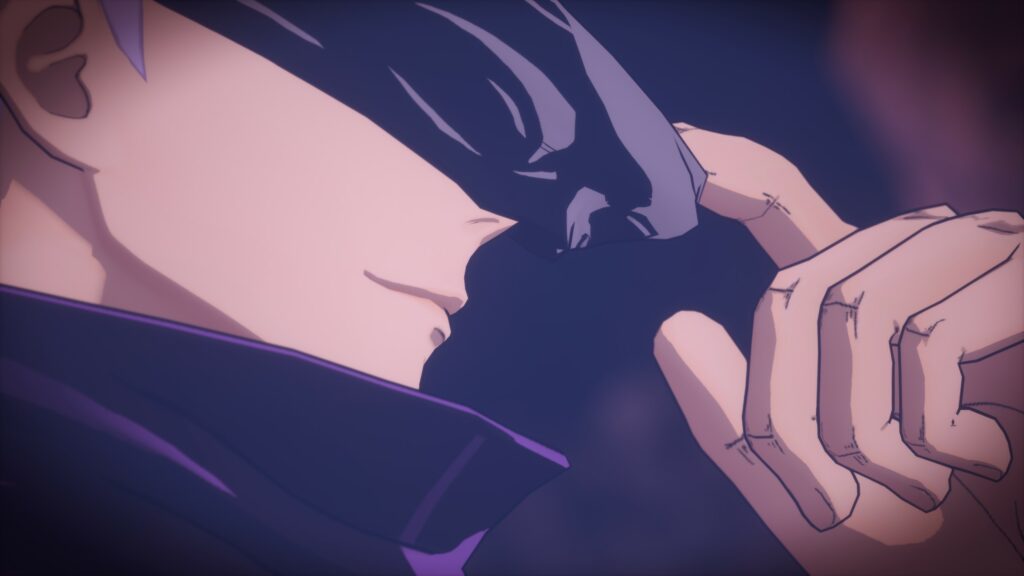
TL;DR
Jujutsu Kaisen Cursed Clash is a unique take on arena battlers, with a 2v2-centric focus and in-depth team-up mechanics. The combat takes getting used to as it’s very slippery with movement and lacks combo mechanics from classic fighting games. These changes in features suit the 2v2 focus greatly but take getting used to if you’re coming from a classic 2D fighter. The graphics and soundtrack are stellar in some areas and lackluster in others giving an inconsistent feel while playing. It’s a wonderful game with great ideas, but it lacks execution and quality in some areas. This is a game I highly recommend people try, but encourage them to wait until it’s on sale.
Cursed Techniques
The first thing you’ll notice in Jujutsu Kaisen Cursed Clash is that the gameplay feels very “slidey”, “floaty”, and even “airy”. Your character hovers slightly after jumping, you slide as if you’re on ice sometimes, and your movement feels almost as if you’re playing on the ice level of any standard platformer. This takes some getting used to, but once you play for a bit this movement feels right for how the game plays. Movement is quick and you dash around the field, avoiding attacks and ducking behind cover.

Speaking of cover, the maps in Jujutsu Kaisen Cursed Clash are littered with obstacles and destroyable terrain. While some maps get this right, and obstacles add to the combat dynamic, some maps feel too messy, cluttered, and closed in that they just feel annoying. These obstacles and terrain pieces also play a key part in combat which I’ll go over once all the basics have been covered. However, in general, they do a good part to add to the atmosphere and strategy of gameplay but are massively done on a few maps that make said maps almost unplayable.
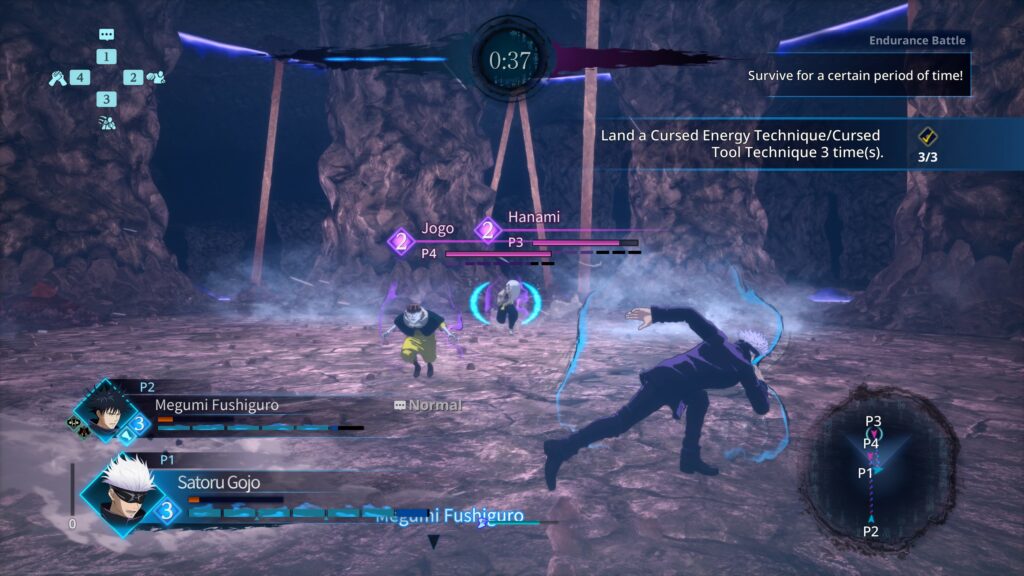
In Jujutsu Kaisen Cursed Clash, combat involves running in a 3-dimensional plane with dashes, jumps, double jumps, and even super jumps to take control of the battlefield and out-manoeuvre your opponents. The quick movement in combinations of obstacles promotes a very much hit-and-run combat style not dissimilar to those of the Gundam arena fighters. Combat in Jujutsu Kaisen Cursed Clash is very similar to those of the Gundam fighters and even more so to that of the Final Fantasy Dissidia series.

Combat in Jujutsu Kaisen Cursed Clash consists of a few elements. Each character has their health and their “Cursed Energy” meter. Quickly you’ll see that many of your attacks don’t do damage. Instead, these “regular” attacks build up your cursed meter similar to how in Dissidia your Bravery attacks build up your Bravery points. In Jujutsu Kaisen Cursed Clash, you build up your cursed meter, and as it fills up you gain increased ability and even new attacks. Gojo for example unlocks his iconic “Hollow Purple” attack at Cursed Level 3, the max level in this game.


If you have any fighting game experience you’ll instinctively want to try and chain combos and make block strings. Unfortunately, you’ll be disappointed in the very low combo limit of the game, paired with the long recovery times of the opponents after being knocked down. Even more so, you may find yourself frustrated by the long recovery times when you are knocked down.
In a vacuum, this seems like a horrible design choice and makes combat longer and more tedious than needed. However, you’ll quickly find that these choices are tailored massively to the intended combat of the game, 2 vs 2 combat. Once you accept that Jujutsu Kaisen Cursed Clash is a 2-on-2 arena fighter, the design choices make a lot of sense and combat flows a lot more smoothly.

Boogie Woogie
A big emphasis in combat is coordinating with your teammate to keep one of the opponents down or crowd-controlled. Jujutsu Kaisen Cursed Clash used high knockdown times, big damage attacks, and some characters’ unique abilities to balance the game around a 2 v 2 experience. Characters like Fushiguro and Geto have really powerful immobilization abilities that help your teammate land hits. Characters like Yuji get in your face while Nobara can pelt the enemies from afar and unthreatened. Even Yuta alone has his kit geared directly toward having a teammate. Even with just 16 playable characters the roster feels flushed out with no characters feeling similar to each other and each having their own playstyle.

When looking at the 2v2 landscape, many design decisions now begin to make sense. Instead of playing for frame advantages or long combo strings, you want high-impact long knockdown times so you can jump from your target to the one your teammate is staring down.
The high-speed movement and jump mechanics now add to the hit-and-run style of combat, ducking in and out of cover, dodging large area of effect attacks, and zoning the opponents while trying to knock them down and help your teammate. While playing on your own may feel awkward and difficult to coordinate with the CPU, playing with others leads to fun moments of teamwork. My biggest complaint about Jujutsu Kaisen Cursed Clash is that there is no local multiplayer or split-screen option. To play with your friends, you each need to own a copy of the game and play on separate devices.

Jujutsu Kaisen Season 1
Most fighting games have a pretty well-put-together story mode of cutscenes, and then story battles. While I recognize not every game can have the production value Mortal Kombat 1 or Tekken 8 has, I do expect a certain level of effort. Starting the Jujutsu Kaisen Cursed Clash story mode, we’re treated to a pretty amazing 3D animated cutscene of one of the more iconic scenes from season 1 of the anime. And after such an amazing start, we are left watching a PowerPoint for hours upon hours.
The majority of story mode re-tells Season 1 and Jujutsu Kaisen 0 in PowerPoint slide shows with screenshots from the anime itself. Often these scenes are at least voice acted, but nearly none of the side content itself is. There are a few high-quality animations spread throughout the story mode, and I can’t help but wonder why they didn’t just make the entire story as such.



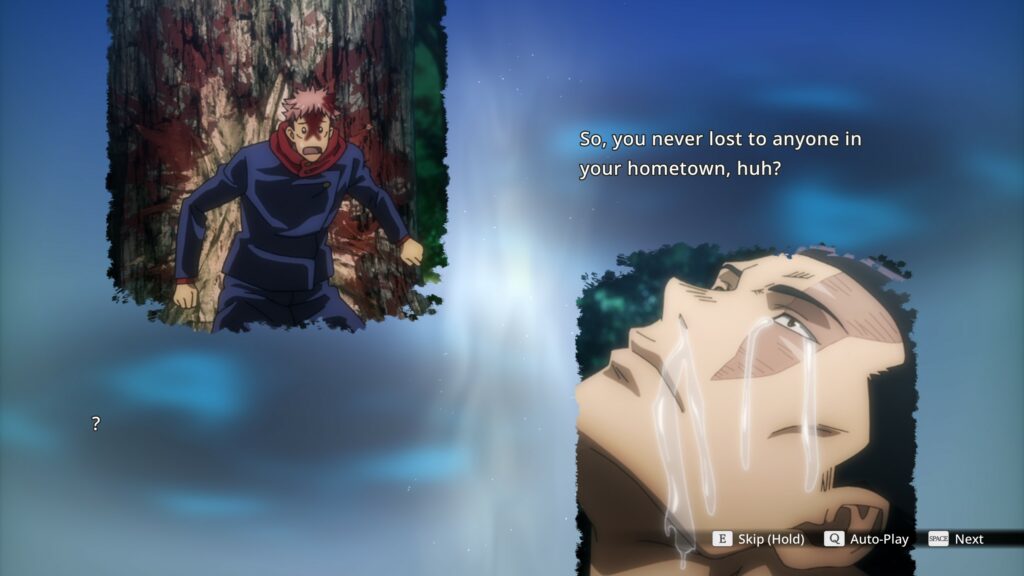
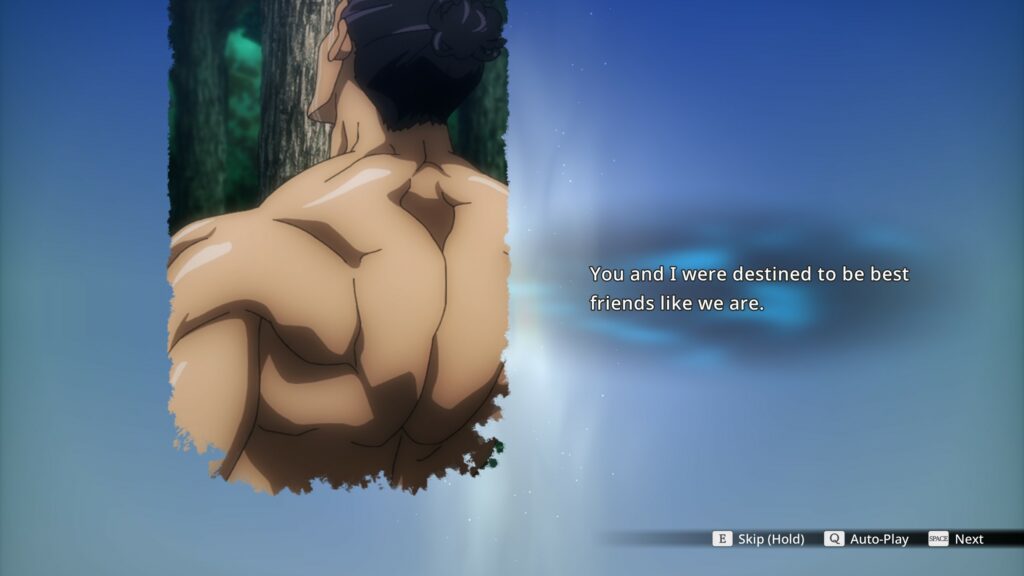
If all or even just more of the story was animated, I would be praising the quality of the animations as what we did get is stellar. You can tell that the game was made with fans of the anime in mind, as you can just skip all dialogue and progress through the story fights.
The story encounters and combat however are very refreshing for a fighting game story mode. Here you do fight encounters of varying difficulty and with a variety of win conditions. The story mode missions are unique among fighting games as they aren’t just classic 1v1 or 2v2 matches. You’ll find yourself reenacting fights teaming up against an enemy, or even on your own against three enemies. What’s more, you’ll not only fight against the game’s main cast, but you’ll also have timed battles or waves of enemies that are just minor curses. In this regard, the story mode has a good amount of variety and can even be challenging at times.




While interesting, the story mode is entirely optional. There are unlockable cosmetics you can use in the game and side stories you can unlock via a relationship chart that progresses as you complete the story. If you never watched the anime, it is a nice way to get the story, otherwise, you can skip the mode entirely. Again, if more effort had been put into animations, I might have given this a more positive look. However, as is, the story mode is a glorified slideshow with cool battles and some animations spread throughout.
Teaming Up
One of the more interesting game modes is the co-op mode. Here Jujutsu Kaisen Cursed Clash lets you go online, team up with friends or random players, or even just a CPU. In RPG-like fashion, you go through waves of random encounters, can add restrictions for buffs, and grind for character EXP and in-game currency. This is as close to the classic arcade mode experience you’ll find in other fighting games. As you fight through the waves you can use the EXP to level up specific characters, increasing the amount of damage they do, their max health, and increase the number of equipment slots they can use.

Overall, this game mode is fun and easy and is a way to progress to the “end-game” content if you want to attempt it. While the encounters are randomized, the mode does eventually get repetitive and grindy as you find yourself just mindlessly mashing to beat the levels. It is essentially an arcade mode, but the trickle of gaining sometimes even less than one level per run makes the mode feel needlessly long.

This culminates in you having a max-level character to take on the Jujutsu Kaisen Cursed Clash survival mode. This mode has you facing higher-level enemies with sometimes more challenging AI. This game mode is satisfying and fun to play as it provides a real challenge. However, the grind to get your characters up to speed is a big turn-off. It’s not impossible to play with level 1 characters but that is probably one of the biggest skill achievements you can have in this game.

Overall Impressions
A stark contrast to the story mode is how the game looks while playing. One thing Jujutsu Kaisen Cursed Clash does exceedingly well is the animation and hit effects of attacks in the game. The game is flashy, fast-paced, exciting, and honestly amazing to watch. Each character has unique moves that come with flashy visual effects, and the team-up attacks and ultimate abilities have very well-animated cutscenes.
Many characters suffer from the issue of having stiff movements and blocky limbs, but this is not very noticeable while playing. The pendulum swings both ways in this regard as some characters need better animation work while for others you can tell more effort was put in during production. Additionally, certain character combinations have their own special team-up attack animations as well as battle entrances. Jujutsu Kaisen Cursed Clash is a spectacle to watch and you feel the weight behind each hit.


The same can be said about the audio score for Cursed Clash. There are some absolute bangers in the soundtrack and I especially enjoy the victory music at the end of each battle. But some songs feel dull, don’t add to the environment, and take me out of the game. That coupled with the lack of voice acting in the side stories leaves you a bit wanting for more. In-game attack sound effects are nice, and attacks like Hollow Puprle sound powerful. But attacks like Black Flash from the many characters that can perform it feel lacklustre and empty.



One of Jujutsu Kaisen Cursed Clash’s biggest weaknesses is that there is no dedicated training mode. There is a Free Battle game mode where you can set up characters to fight, set it as a custom 1v2 experience or 2v1 to practice combos against a CPU and adjust other fight settings. But this is the extent of combat training resources in the game. After seeing what Tekken 8, another Bandai fighting game accomplished just recently. I feel the lack of training resources, or even just local play with a friend really hurts the game.

Verdict
Jujutsu Kaisen is on the right track in designing a fighting game and there are many fun and unique ideas but the final execution leaves a lot to be desired. I love how different the design space is and how the focus on 2 v 2 combat balances the characters against each other. What’s lacking for me are the features outside of online play and the lack of quality in many of the single-player game modes.
The animation style and music swing from being stellar to being lackluster and many of the single-player features feel grindy and repetitive. In my honest opinion, if this game were only $30-40$ on release I wouldn’t have many of these sentiments, but the fact that it released at a full $60 I expect a high level of quality control. The game is fun and is an enjoyable experience, but I recommend that you wait for it to go on sale before purchasing.
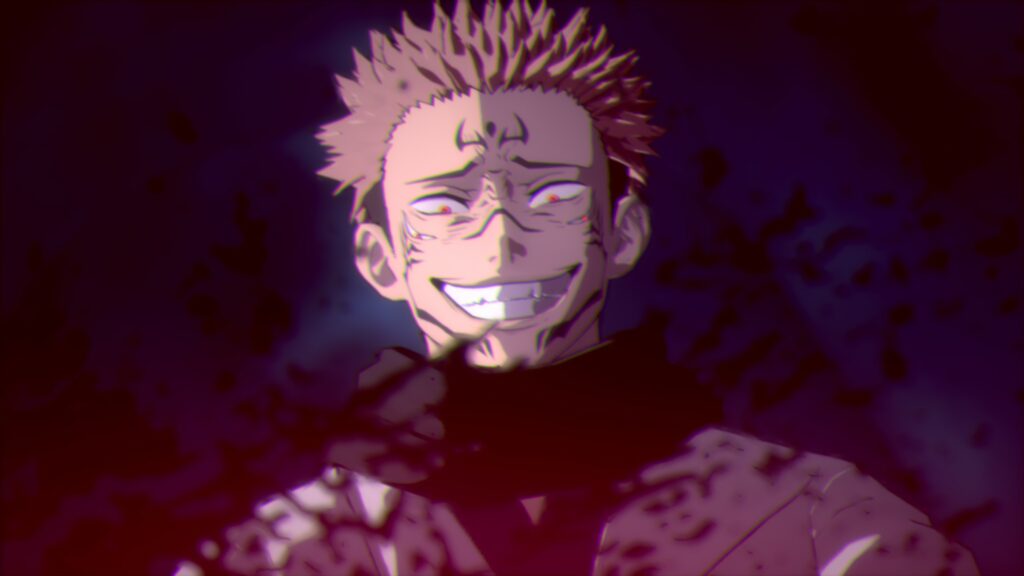
Special thanks to Bandai Namco for providing us with a review copy!
